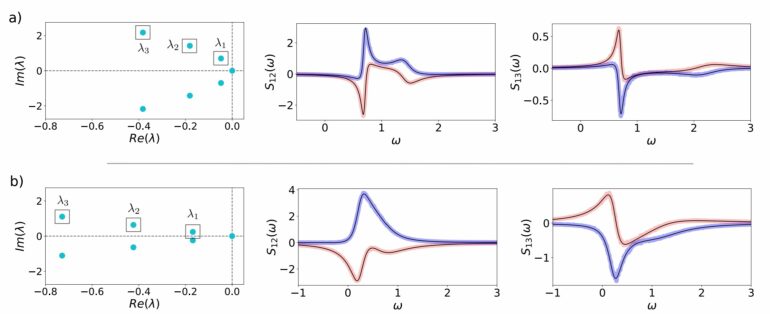Life’s random rhythms surround us–from the hypnotic, synchronized blinking of fireflies…to the back-and-forth motion of a child’s swing… to slight variations in the otherwise steady lub-dub of the human heart.
But truly understanding those rhythms—called stochastic, or random, oscillations—has eluded scientists. While researchers and clinicians have some success in parsing brain waves and heartbeats, they’ve been unable to compare or catalog an untold number of variations and sources.
Gaining such insight into the underlying source of oscillations “could lead to advances in neural science, cardiac science and any number of different fields,” said Peter Thomas, a professor of applied mathematics at Case Western Reserve University.
Thomas is part of an international team that says it has developed a novel, universal framework for comparing and contrasting oscillations—regardless of their different underlying mechanisms—which could become a critical step toward someday fully understanding them.
Their findings were recently published in Proceedings of the National Academy of Sciences.
“We turned the problem of comparing oscillators into a linear algebra problem,” Thomas said. “What we have done is vastly more precise than what was available before. It’s a major conceptual advance.”
The researchers say others can now compare, better understand—and even manipulate—oscillators previously considered to have completely different properties.
“If your heart cells aren’t synchronized, you die of atrial fibrillation,” Thomas said. “But if your brain cells synchronize too much, you have Parkinson’s disease, or epilepsy, depending on which part of the brain the synchronization occurs in. By using our new framework, that heart or brain scientist may be able to better understand what the oscillations could mean and how the heart or brain is working or changing over time.”
Swaying skyscrapers and brain waves
Thomas said the researchers—who included collaborators from universities in France, Germany and Spain—found a new way to use complex numbers to describe the timing of oscillators and how “noisy,” or imprecisely timed, they are.
Most oscillations are irregular to some extent, Thomas said. For example, a heart rhythm is not 100% regular. A natural variation of 5-10% in the heartbeat is considered healthy.
Thomas said the problem with comparing oscillators can be illustrated by considering two markedly different examples: brain rhythms and swaying skyscrapers.
“In San Francisco, modern skyscrapers sway in the wind, buffeted by randomly shifting air currents—they’re pushed slightly out of their vertical posture, but the mechanical properties of the structure pull them back,” he said. “This combination of flexibility and resilience helps high-rise buildings survive shaking during earthquakes. You wouldn’t think this process could be compared with brain waves, but our new formalism lets you compare them.”
How their findings might help either discipline—mechanical engineering and neuroscience—may be unknown right now, Thomas said, comparing the conceptual advance to when Galileo discovered Jupiter’s orbiting moons.
“What Galileo realized was a new point of view, and while our discovery is not as far-reaching as Galileo’s, it is similarly a change in perspective,” he said. “What we report in our paper is an entirely new point of view on stochastic oscillators.”
More information:
Alberto Pérez-Cervera et al, A universal description of stochastic oscillators, Proceedings of the National Academy of Sciences (2023). DOI: 10.1073/pnas.2303222120
Provided by
Case Western Reserve University
Citation:
Making sense of life’s random rhythms: Team suggests universal framework for understanding ‘oscillations’ (2023, August 15)


